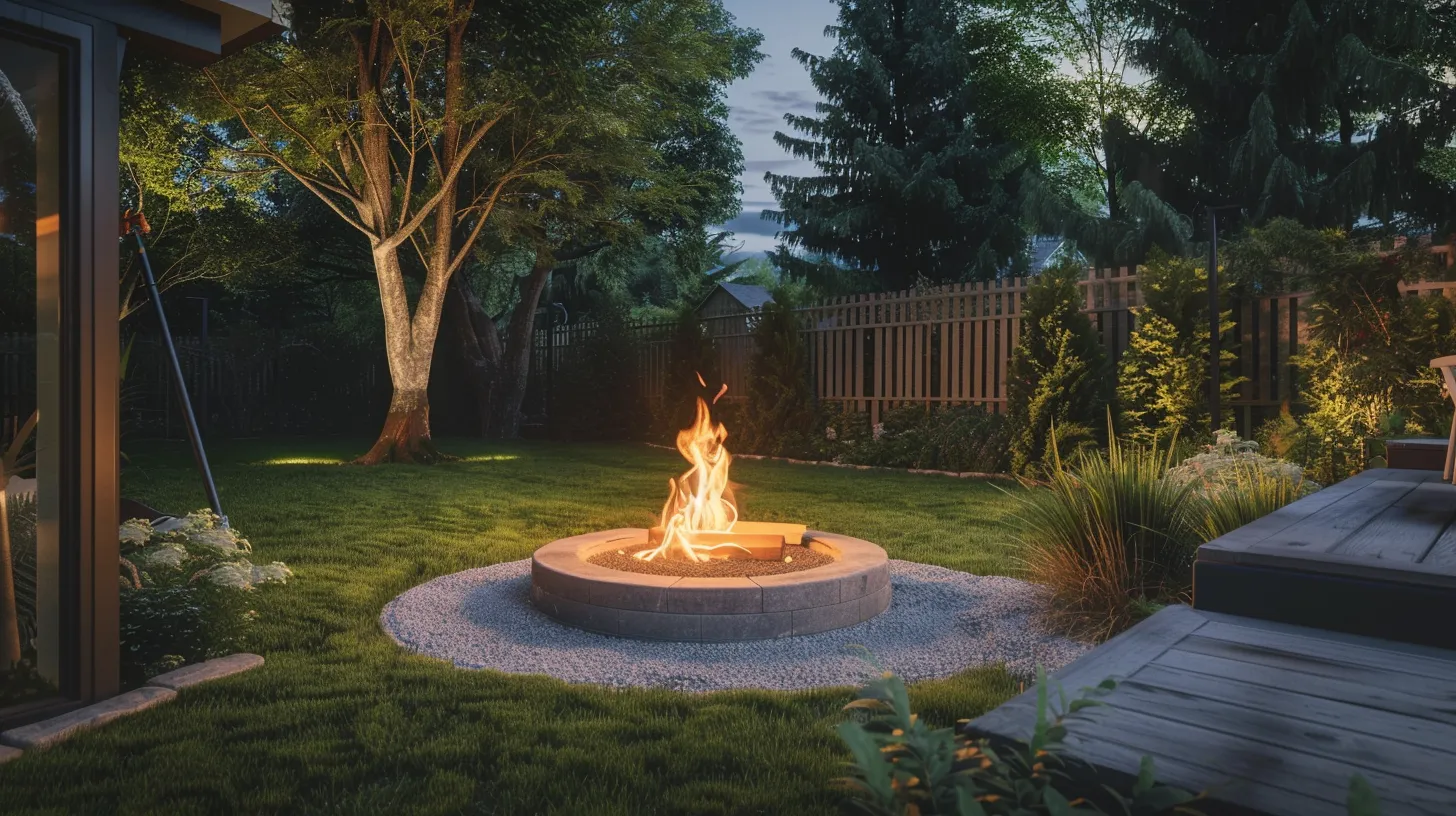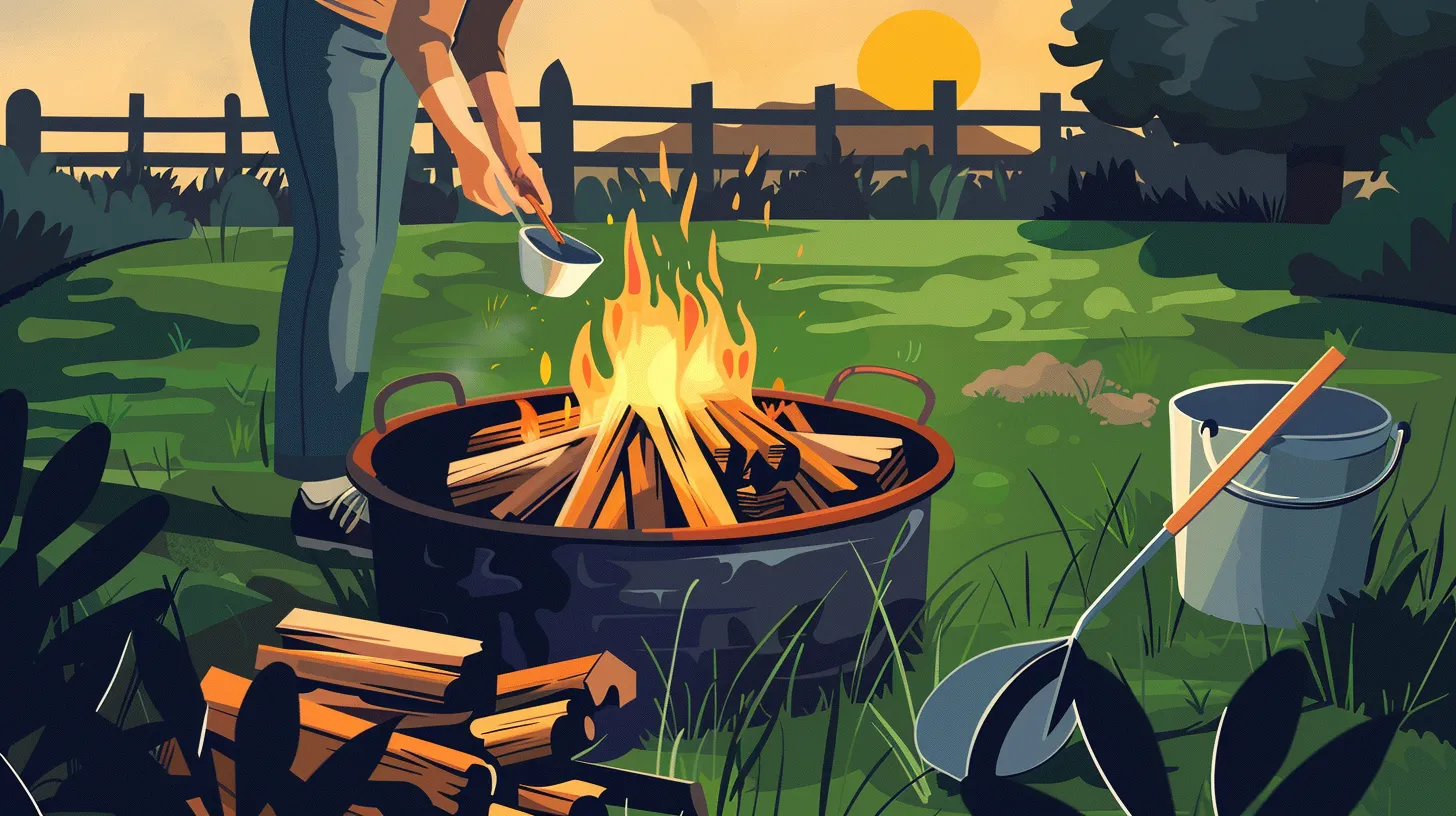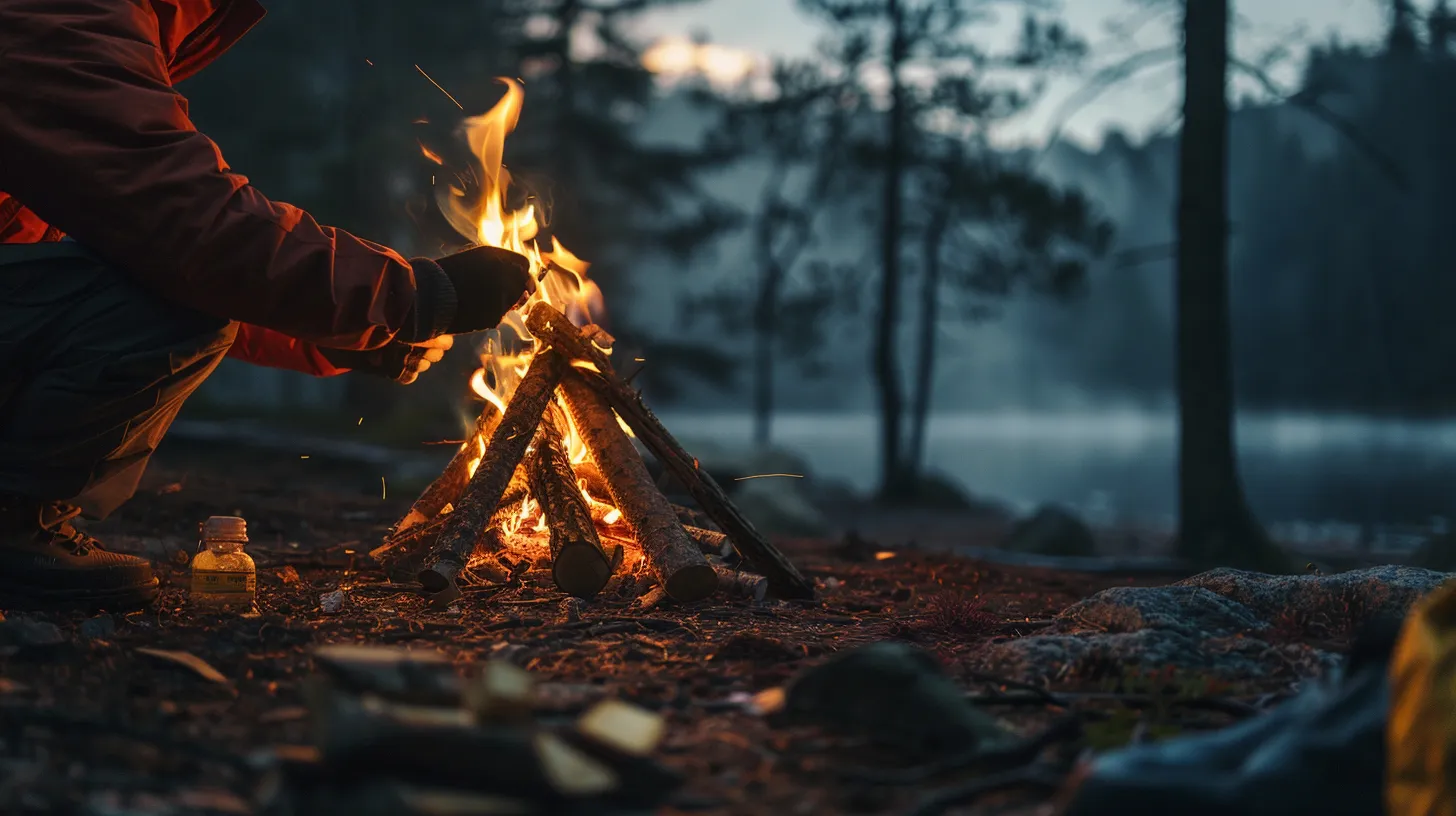The proper use of a fire pit encompasses a variety of considerations that extend beyond merely igniting logs. From selecting an optimal location that ensures safety and compliance with local regulations to choosing the right type of wood that can enhance the experience either through heat or flavor, the nuances can significantly affect the outcome.
Moreover, the method of lighting and maintaining the fire, as well as the precautions necessary to extinguish it safely, are critical components of responsible fire pit use. As we explore these facets, one may uncover the subtle art and science that underpin the seemingly simple activity of gathering around a fire.
Choosing the Right Location

Selecting an optimal location for your fire pit, at least 10 feet away from structures and low-hanging branches, is crucial for safety and efficient use. This precaution ensures that the fire, especially in wood-burning fire pits, does not pose a hazard to nearby buildings or vegetation. The chosen spot for the pit must be on a level surface. This is essential not just for stability, preventing the fire pit from tipping over, but also for promoting an even burn, which is critical for both safety and enjoyment.
Moreover, it's vital to consider the surrounding environment, particularly avoiding placement on wooden decks or near any combustible materials. Awareness of prevailing wind patterns is also key to preventing smoke from becoming a nuisance and ensuring that the fire pit is adequately ventilated. Including lava rock in your fire pit setup can enhance safety by distributing heat more evenly and reducing the likelihood of flare-ups.
Always keep a bucket of water or sand within reach when the pit is in use, ready to address any unexpected emergencies promptly. By adhering to these guidelines, you can enjoy the warmth and ambiance of your fire pit with peace of mind.
Fire Pit Preparation

After ensuring the proper location for your fire pit, the next critical step involves preparing it for a safe and enjoyable experience. Positioning your fire pit on a non-combustible surface is paramount to prevent any accidental fires from spreading. This precaution safeguards both the users and the surrounding environment.
Moreover, it's essential to gather dry firewood, ensuring its moisture content is below 20% for optimal burning efficiency. Wet or damp wood can lead to excessive smoke and inefficient burning, detracting from the overall experience. Having kindling sticks, natural firelighters, and matches at hand facilitates easy fire starting, streamlining the process without unnecessary delays.
Safety should never be an afterthought when preparing to light a fire pit. Position the fire pit at a safe distance from flammable structures and overhanging branches to minimize the risk of accidental fires. Additionally, keeping a bucket of water or sand nearby allows for quick responses to emergencies, enhancing safety measures. These preparatory steps ensure a secure setup, allowing for a focus on the enjoyment and warmth a fire pit brings, without compromising on safety or efficiency.
Lighting the Fire

To effectively light the fire, begin by gathering dry kindling sticks and natural firelighters, ensuring a smooth ignition process. Lighting a fire in a pit requires careful preparation and a methodical approach. Firstly, build a fire by arranging a pyramid of kindling around a central ball of tinder. This structure is crucial for creating a strong base for the fire, enabling the tinder to catch quickly and the kindling to ignite efficiently.
Once the foundation is set, light the tinder. The initial flame from the tinder will gradually spread to the kindling sticks, creating a robust flame. This step is critical for a successful ignition, as the kindling's role is to provide a steady burn that will eventually catch onto larger logs.
As the fire grows in strength, begin adding larger logs to the mix, being mindful of maintaining good airflow. This is essential for efficient burning, as oxygen feeds the flames and helps in generating a hotter, more sustainable fire. Wait until the logs have broken down into white, glowing embers. This indicates that the fire is at an optimal condition for activities such as cooking, signaling a well-established fire.
Maintaining Your Fire

Maintaining a fire in your pit requires consistent attention and adherence to several key practices to ensure both safety and efficiency. Regular cleaning is paramount; ash and debris accumulation can interfere with air flow and fire quality in your fire bowl, leading to inefficient burning and potentially hazardous conditions. Inspecting your fire pit for signs of wear or damage is crucial, particularly for components exposed to high temperatures or directly involved in the fire's maintenance, such as the gas line in a gas-powered pit.
For those using a portable fire pit, positioning it at least 10 feet away from any structures or combustible materials helps prevent the unintended spread of sparks or embers. Storing firewood in a dry, sheltered place ensures it remains ready for lighting without the risk of dampness affecting the fire's quality. Moreover, protecting your fire pit with a waterproof cover when not in use guards against moisture, which can cause rust and other damage, compromising safety and effectiveness. Regularly inspecting and maintaining your fire pit, including all components and the surrounding area, is essential to prevent accidents and enjoy a safe, warm, and inviting fire.
Extinguishing the Fire Safely

Safely extinguishing a fire in your pit is a crucial step to ensure both environmental safety and the longevity of your fire pit. After enjoying the warmth and ambiance, it's vital to ensure that the fire is completely put out. Allowing the fire to burn down to ash will make the extinguishing process more manageable.
Once you're ready to extinguish your fire, carefully pour water over the fire to drown embers thoroughly. This action helps prevent re-ignition, ensuring that all burning material is fully extinguished. If water is not an option, covering the embers and ashes with damp sand or dirt can also effectively suppress the fire.
It's essential to stay clear of the steam and hot water that can arise when water interacts with the hot embers. After the fire pit has cooled down and the ashes are cold, dispose of them in regular garbage, checking local laws to ensure proper disposal practices.










